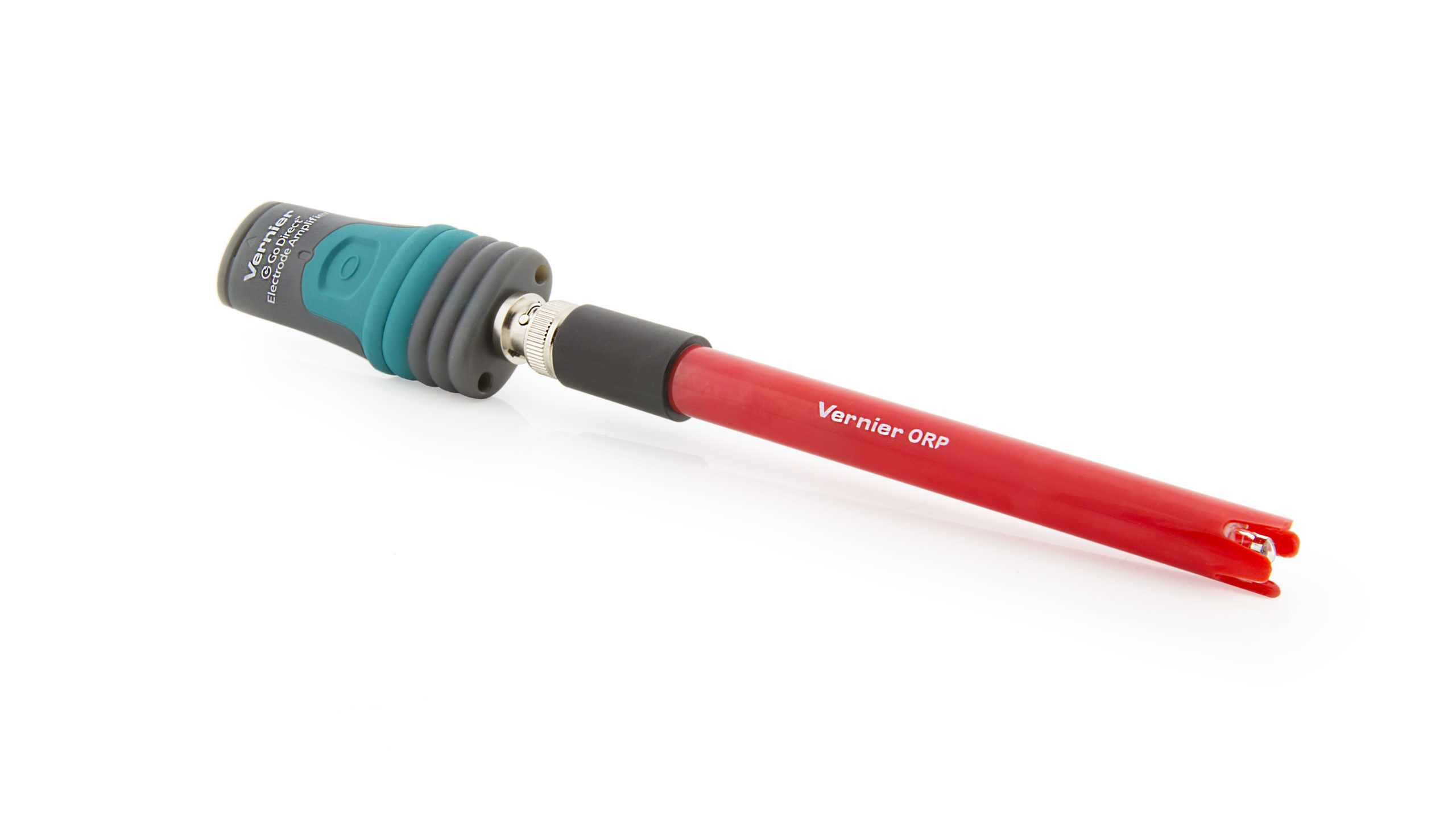Troubleshooting
General: Press the power button on the sensor to turn it on. Connect your sensor as described in the Getting Started instructions for your device. (The green LED will flash to indicate the sensor is connected.)
- Primary Test: Place the tip of the sensor in a buffer solution of known pH and check the readings. Typical readings, in mV, of various buffer solutions are
⚬ pH 4 buffer solution: 410 – 430 mV
⚬ pH 7 buffer solution: 280 – 300 mV
⚬ pH 10 buffer solution: 130 – 150 mV - Secondary Test: Confirm that the BNC connection is secure.
Additional Troubleshooting
- Do any of your sensors require special storage?
- How can I keep my pH or ORP storage solution from spilling when the sensor is in use?
- Go Direct Electrode Amplifier Troubleshooting and FAQs
- I found an ORP electrode that was stored dry. How can I test it to see if the electrode is still working?
- Why are the readings from my ORP sensor noisy?
- Can I use the ORP Sensor for Cyclic Voltammetry?
- How do I change the displayed measurement channel on my Go Direct Electrode Amplifier or ISE Amplifier?
- Go Direct sensor does not connect to LabQuest 2 via Bluetooth.
- How do I replace the battery in a Go Direct Wand-Style Sensor?
- Troubleshooting Bluetooth Connections with Go Direct Sensors
- What can I do if a Go Direct sensor's Bluetooth LED flashes red and green when I try to connect to it and the connection fails?
- Will my device work with Go Direct Sensors via Bluetooth?
- How do I know if my LabQuest will work with Go Direct Sensors and Go Wireless devices?
Specifications
ORP ELECTRODE
- Type: Sealed, gel-filled, polycarbonate body, Ag/AgCl reference, single junction
- ORP element: 99% pure platinum band sealed on a glass stem
- Accuracy with new electrode: ±20 mV
- Storage solution: pH-4/KCl solution (10 g KCl in 100 mL buffer pH-4 solution)
- Dimensions
⚬ Shaft diameter: 12 mm OD
⚬ Shaft length: 15.5 cm - Impedance: ~20 kΩ at 25ºC
ELECTRODE AMPLIFIER
- Units: mV
- Input range: ±1000 mV
- Resolution: 0.01 mV
- Dimensions (amplifier only): 8.5 cm × 3 cm × 1.75 cm
- Connections:
⚬ Wireless: Bluetooth® v4.2 (wireless range 30 m unobstructed)
⚬ Wired: USB 2.0 full speed - Battery: 300 mA Li-Poly
⚬ Battery Life (single, full charge): ~24 hours continuous data collection
⚬ Battery Life (lifetime): 2 – 5 years (typical)
Calibration
Calibrate? No. The Go Direct ORP has its electrode setup to read voltage (mV). In this configuration, calibration is disabled.
Electrode responses vary significantly among electrodes, time, and temperature. This behavior drives the need for calibration. However, the Go Direct ORP mV response is dictated by the amplifier (as opposed to the electrode) and does not change over time, temperature, or with the electrode being attached. Calibration of the ORP sensor in mV by putting it into different standards does not provide a better mV calibration. It provides a worse calibration as it will assume the ORP is perfect. Then the mV reading will be off regardless of which electrode is connected.
Battery Troubleshooting
- If the sensor can be turned on when connected by USB but not when disconnected from USB, the battery either needs charging or has reached its end of life and can no longer hold a charge.
⚬ First, try charging the sensor for several hours. - If the sensor still won’t turn on when disconnected from USB, try swapping the battery with a working sensor to see if the problem follows the battery or stays with the sensor.
⚬ If the problem stays with the sensor, the battery is probably not the issue.
⚬ If the problem follows the battery, the battery has likely reached its end of life. - If you intend to use this sensor wirelessly, its battery will need replacing.
Go Direct® 300 mAh Replacement Battery (GDX-BAT-300 ) - See How do I replace the battery in a Go Direct Wand-Style Sensor? for more information (including a video).
Rechargeable batteries are covered by a one-year warranty.
Batteries should last two to five years in typical use.
Related Products
- Micro USB to USB-C Cable (
CB-USB-C-MICRO ) - Go Direct® Charge Station (
GDX-CRG ) - Electrode Support (
ESUP ) - Go Direct® Sensor Clamp (
GDX-CLAMP ) - Go Direct® pH BNC Electrode (
GDX-PH-BNC ) - Stir Station (
STIR ) - Go Direct® Drop Counter (
GDX-DC ) - ORP Sensor (
ORP-BTA )
Replacement Parts
- Go Direct® 300 mAh Replacement Battery (
GDX-BAT-300 ) - Micro USB Cable (
CB-USB-MICRO ) - Go Direct® Electrode Amplifier (
GDX-EA ) - Go Direct® ORP BNC Electrode (
GDX-ORP-BNC ) - Storage Solution Bottles (5) (
BTL ) - pH Storage Solution (
PH-SS )

